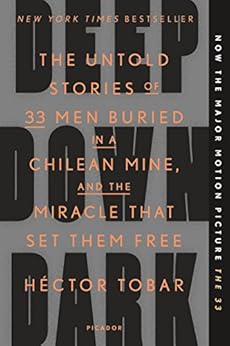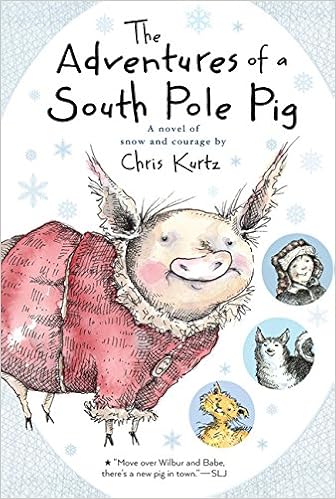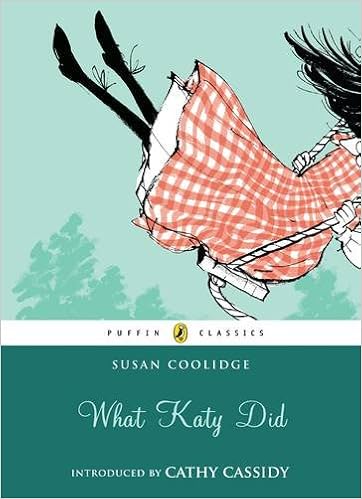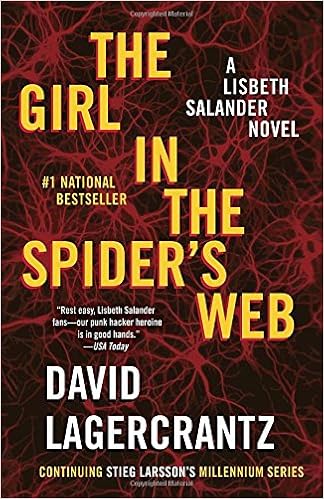It’s that time again – the time of year when I take a bit to reflect on what I’ve read this year, and since this is my blog, I do it here. Like last year, I’m putting all the non-professional-related books I read in this one post and I’ll make dedicated posts to other books I read that you’d find more relevant to what this blog is usually about.
– Connect with me on Goodreads & follow the blog on Bloglovin –
Must Read
Best of 2016
 Deep Down Dark: The Untold Stories of 33 Men Buried in a Chilean Mine, and the Miracle that Set Them Free
Deep Down Dark: The Untold Stories of 33 Men Buried in a Chilean Mine, and the Miracle that Set Them Free
Best for: Any day, anytime. My must-read of the year.
From Goodreads: “When the San José mine collapsed outside of Copiapó, Chile, in August 2010, it trapped thirty-three miners beneath thousands of feet of rock for a record-breaking sixty-nine days. Across the globe, we sat riveted to television and computer screens as journalists flocked to the Atacama desert. While we saw what transpired above ground during the grueling and protracted rescue, the story of the miners’ experiences below the earth’s surface and the lives that led them there hasn’t been heard until now. In this master work of a Pulitzer-Prizewinning journalist, Héctor Tobar gains exclusive access to the miners and their stories. The result is a miraculous and emotionally textured account of the thirty-three men who came to think of the San José mine as a kind of coffin, as a cave inflicting constant and thundering aural torment, and as a church where they sought redemption through prayer while the world watched from above. It offers an understanding of the families and personal histories that brought los 33 to the mine, and the mystical and spiritual elements that surrounded working in such a dangerous place.”
My take: I was riveted with my students when this event happened, and before I tried out Hollywood’s twist on it (I still haven’t), I wanted to read the real story.
If you make a man a symbol of things that are bigger than any one person can possibly be, you risk stripping that man of his sense of who he really is.
I devoured this book, cheering them on with each passing page as I saw how humanity rallies behind its own – even when they’re cheating, hot-tempered alcoholics- because attached to the life is drama. We ought to be utterly stunned at the fact that Chile could not let them die because the world was watching. That Apple had to send them iPods because the world was watching. That Nike had to send down expensive shoes because the world was watching. That the collective governments spent twenty million dollars to save them because the world was watching (and their relatives were loud). Maybe we need more drama attached to all life so we see any given collection of 33 lives – in the womb, in a nursing home, in a refugee camp, in a hospital in Aleppo – as worth $20 million to save.
As an evangelical Christian frequently swimming in a sea of secular humanists, I was immediately drawn to Don José Henríquez.
Now Mario has issued his angry call to prayer, and with all the surprised miners around and inside the Refuge still staring at him, he turns to José and says: ‘Don José, we know you are a Christian man, and we need you to lead us in prayer. Will you?’ From this moment forward Henríquez will be known as “the Pastor” to his fellow miners because as soon as he opens his mouth and begins to talk it’s clear that he knows how to speak of God and to God….
He is a man of God, and suddenly here, in this tomb, the religious severity that many of them found annoying during the everyday encounters of the A shift is exactly what they need.
As their lamp batteries dim,
This is frightening, to have each new prayer take you a little deeper into what may be a final and unending darkness.
Who is a warrior?
A warrior can also be a man who takes apart an engine to make soup and then serves it to his brothers, keeping up their spirits with the rising inflections of his voice.
Is everyone in a tragedy a hero?
They are not heroes, but ordinary men who are afraid.
Where is the devil?
The devil is present in the mine, taking form in all the greed, the misunderstanding, the envy, and the betrayals among the men. He believes that the devil has come from the surface, attaching himself to those letters, the offers of money and fame, to pit them against one another.
A Chilean mining legend has it that Satan lives in all gold mines.
Check it out.
In the Heart of the Sea
Best for: When you’re feeling strong of stomach and don’t need much sleep.
From Goodreads: “In 1820, the 240-ton Essex set sail from Nantucket on a routine voyage for whales. Fifteen months later, in the farthest reaches of the South Pacific, it was repeatedly rammed and sunk by an eighty-ton bull sperm whale. Its twenty-man crew, fearing cannibals on the islands to the west, made for the 3,000-mile-distant coast of South America in three tiny boats. During ninety days at sea under horrendous conditions, the survivors clung to life as one by one, they succumbed to hunger, thirst, disease, and fear.
In the Heart of the Sea tells perhaps the greatest sea story ever. Philbrick interweaves his account of this extraordinary ordeal of ordinary men with a wealth of whale lore and with a brilliantly detailed portrait of the lost, unique community of Nantucket whalers. Impeccably researched and beautifully told, the book delivers the ultimate portrait of man against nature, drawing on a remarkable range of archival and modern sources, including a long-lost account by the ship’s cabin boy. At once a literary companion and a page-turner that speaks to the same issues of class, race, and man’s relationship to nature that permeate the works of Melville, In the Heart of the Sea will endure as a vital work of American history.”
My take on it: As I read through this book, I continually had the thought I had while reading Unbroken (one of my top two or three favorite books ever): This is not possible. They cannot survive. There is no way.
There was a way, a few ways, and all of them were bad. It was the Donner party, except on the ocean. It was an ugly journey but they were determined to survive. It can take me a long time to get through a book with my schedule and family being what they are, but I raced through this one. I had to know who got rescued, and how. History beats fiction here, for sure.
Adventures of a South Pole Pig
 Best for: Dinnertime or bedtime with your family gathered around
Best for: Dinnertime or bedtime with your family gathered around
From Goodreads: “Flora the pig was born for adventure: “If it’s unexplored and needs to get dug up, call me. I’m your pig,” she says. The day Flora spots a team of sled dogs is the day she sets her heart on becoming a sled pig. Before she knows it, she’s on board a ship to Antarctica for the most exhilarating—and dangerous—adventure of her life. This poignant novel of a purposeful pig is sure to become a favorite with any young readers who have ever dreamed of exploring the great beyond.”
My take on it: I’m in love with anything that shows my daughters what women with spunk can do. I want them to know that sometimes things are hard, and with perseverance and resilience they can tackle life and come out victorious against ridiculously difficult circumstances. I think Anna in Frozen is the best Disney princess ever imagined, with perhaps the notable exception of Belle. I think Officer Judy Hopps is one of the best-developed female characters in any animated film, ever. And I love Flora the South Pole pig, because in the most ridiculous plot ever, a spunky farm pig wants to be a sled dog, and with her fearless, feisty spirit and the power of friendship, by Jove she does.
Worth Your Time
The Empire of Necessity: Slavery, Freedom, and Deception in the New World
Best for: Post-election, pre-Christmas 2016 when you need a slap in the face about how history really goes around and comes around until we change something.
From Goodreads: “One morning in 1805, off a remote island in the South Pacific, Captain Amasa Delano, a New England seal hunter, climbed aboard a distressed Spanish ship carrying scores of West Africans he thought were slaves. They weren’t. Having earlier seized control of the vessel and slaughtered most of the crew, they were staging an elaborate ruse, acting as if they were humble servants. When Delano, an idealistic, anti-slavery republican, finally realized the deception, he responded with explosive violence.
Drawing on research on four continents, The Empire of Necessity explores the multiple forces that culminated in this extraordinary event—an event that already inspired Herman Melville’s masterpiece Benito Cereno. Now historian Greg Grandin, with the gripping storytelling that was praised in Fordlandia, uses the dramatic happenings of that day to map a new transnational history of slavery in the Americas, capturing the clash of peoples, economies, and faiths that was the New World in the early 1800s.”
My take:
It wasn’t riveting, but it was certainly interesting, and about a part of the world and a time and industry I rarely enter into.
A Spanish-teacher quote from the book:
Delano in the past had complained about Spanish legalisms, the endless paperwork, inexplicable double or triple taxes levied on single items, and the complicated and seemingly arbitrary rules and regulations governing trade and navigation. He had trouble with everyday Spanish, but Spanish formalism, with its passive voice and reflexive verbs seemingly intent on confusing subject and object, was a bewildering hall of mirrors.
Shopaholic and Sister
 Best for: A plane ride when you need to take your mind off the turbulence and the physics of flying.
Best for: A plane ride when you need to take your mind off the turbulence and the physics of flying.
From Goodreads: “Irresistible, one-woman shopping phenomenon Becky Bloomwood is back in this hilarious, heartwarming, New York Times bestselling tale of married life, best friends, and long-lost sisters (and the perils of simply having to own an Angel handbag!).”
My take: I find Sophie Kinsella’s writing hysterical but in this my fourth round with Becky Bloomwood, the title’s perpetual shopaholic, I’m inclined to agree with many of the reviewers on Goodreads: it’s the same predictable plot, and Becky’s getting annoying, albeit amusingly so. Becky shops herself into a bind and hides it from the people she loves, particularly her fantastically rich husband who’s always there to bail her out, so she only seems to learn her lesson until the next book. Still, the sister twist added some depth. I’ll probably turn to the next installment at some point to see how much trouble Becky can shop herself into when a baby is on the way.
Panic in a Suitcase
Best for: When you realize there’s little diversity in your reading material and the authors.
From Goodreads: “In this account of two decades in the life of an immigrant household, the fall of communism and the rise of globalization are artfully reflected in the experience of a single family. Ironies, subtle and glaring, are revealed: the Nasmertovs left Odessa for Brighton Beach, Brooklyn, with a huge sense of finality, only to find that the divide between the old world and the new is not nearly as clear-cut as they thought. The dissolution of the Soviet Union makes returning just a matter of a plane ticket, and the Russian-owned shops in their adopted neighborhood stock even the most obscure comforts of home. Pursuing the American Dream once meant giving up everything, but does the dream still work if the past is always within reach?”
My take on it: Honestly, it was hard for me to get into this book, but once I figured out what the meandering storyline actually was, I fully appreciated the glimpse into lives and origins that are almost nothing like my own. I need to look there more often, to find where they actually are a part of me.
The Widow
Best for: When you’re sad that you finished Girl on the Train and you’re sure you won’t find anything as good (you’re right, here).
From Goodreads: “When the police started asking questions, Jean Taylor turned into a different woman. One who enabled her and her husband to carry on, when more bad things began to happen…
But that woman’s husband died last week. And Jean doesn’t have to be her anymore.
There’s a lot Jean hasn’t said over the years about the crime her husband was suspected of committing. She was too busy being the perfect wife, standing by her man while living with the accusing glares and the anonymous harassment.
Now there’s no reason to stay quiet. There are people who want to hear her story. They want to know what it was like living with that man. She can tell them that there were secrets. There always are in a marriage.”
My take on it: It’s a little slower than Girl on the Train, but still the comparison is a good one. Frighteningly possible and it wraps up nicely, which I always appreciate. I hate endings with no justice (lookin’ at you, Gone Girl).
Out of Captivity
 Best for: When you need to explore the answer to this question: If your spouse was kidnapped and you didn’t see him/her for 5.5 years, would you fall away or would love carry you through?
Best for: When you need to explore the answer to this question: If your spouse was kidnapped and you didn’t see him/her for 5.5 years, would you fall away or would love carry you through?
From Goodreads: “On February 13, 2003, a plane carrying three American military contractors – Marc Gonsalves, Tom Howes, and Keith Stansell – crashed in the mountainous jungle of Colombia. Dazed and shaken, they awoke battered and covered in blood with automatic rifles pointing at their faces. As of that moment they belonged to the terrorist organization known as the FARC, the military arm of the Colombia Communist Party established in the 1960s. Thus began five-and-a-half years of captivity as these three men struggled to survive the madness of their surroundings.”
My take on it: I read Clara Rojas’s book, I read Ingrid Betancourt’s (and met her!), and I just had to get the American contractors’ take on this event as well. This book is written with the three men taking turns telling the story, and that is the best part. I could hear the different personalities of the three men shine through their individual sections. They were determined, and they made it.
The Cheshire Cheese Cat
 Best for: A car ride with the kids (audio version)
Best for: A car ride with the kids (audio version)
From Goodreads: “Skilley, an alley cat with an embarrassing secret, longs to escape his hard life dodging fishwives brooms and carriage wheels and trade his damp alley for the warmth of the Cheshire Cheese Inn. When he learns that the innkeeper is looking for a new mouser, Skilley comes up with an audacious scheme to install himself in the famous tavern. Once established in the inn, Skilley strikes a bargain with Pip, the intelligent mouse-resident, and his fellow mice. Skilley protects the mice and the mice in turn give to Skilley the delectable Cheshire cheese of the inn. Thus begins a most unlikely alliance and friendship. The cat and mouse design a plan to restore Maldwyn, the wounded raven and faithful guard in the service of Queen Victoria, to his rightful place in The Tower, but first they must contend with a tyrannical cook, a mouse-despising barmaid, and an evil tomcat named Pinch. Will the famous author suffering from serious writers block who visits the Cheshire Cheese pub each day be able to help?”
My take on it: Really, who can resist a tale about a mouse who can read and an alley cat who eats cheese, with cameo appearances by Charles Dickens and Queen Victoria?
A rollicking read-aloud or car-trip audiobook for the whole family. The turns of phrase are often overly sophisticated for the target age but my (albeit verbally advanced) seven-year-old was engaged and the four-year-old listened in turn as well. Not five stars because the “embarrassing secret” is really not that embarrassing. Cute characters, cute resolution, plenty of silly suspense thrown in, just a good family read.
What Katy Did
 Best for: going back in time 150 years with your kids, with some conversations to update the perspective.
Best for: going back in time 150 years with your kids, with some conversations to update the perspective.
From Goodreads: “Twelve-year-old Katy is constantly making and quickly breaking resolutions about how she will change her ways and treat others, especially her five younger brothers and sisters, with more respect and compassion. When Katy meets her Cousin Helen, an invalid, Katy is awed by her kindness, prettiness, and generosity. Katy is determined to become more like Helen, a resolution that lasts only a few hours. Soon, however, Katy gets a chance to become more like cousin Helen than she ever wished as she finds herself confined to her bedroom for four years as a result of an accident. Much of the story is focused on the change Katy undergoes during her illness.”
My take on it: If you’re looking for a good classic for young girls, yes, Little Women is better. Yes, Caddie Woodlawn is perhaps the greatest option ever. But I’m biased about What Katy Did because it was one of my mother’s favorite childhood books and we enjoyed it together when I was a child. And because I refuse to discount a 145-year-old book because it doesn’t have a 2106 perspective. I wanted to enjoy it with my children, and my girls loved it. As for the movie, it was cute, but disassembled the plot in unforgivable ways.
The Forgotten Room
Best for: When you’re ready to completely suspend disbelief in fantastically impossible coincidences to enjoy a good story.
From Goodreads: “1945: When the critically wounded Captain Cooper Ravenal is brought to a private hospital on Manhattan’s Upper East Side, young Dr. Kate Schuyler is drawn into a complex mystery that connects three generations of women in her family to a single extraordinary room in a Gilded Age mansion.
Who is the woman in Captain Ravenel’s portrait miniature who looks so much like Kate? And why is she wearing the ruby pendant handed down to Kate by her mother? In their pursuit of answers, they find themselves drawn into the turbulent stories of Gilded Age Olive Van Alen, driven from riches to rags, who hired out as a servant in the very house her father designed, and Jazz Age Lucy Young, who came from Brooklyn to Manhattan in pursuit of the father she had never known. But are Kate and Cooper ready for the secrets that will be revealed in the Forgotten Room?
The Forgotten Room, set in alternating time periods, is a sumptuous feast of a novel brought to vivid life by three brilliant storytellers.”
My take on it: I was fascinated by the span of time periods and intertwining of plots and social classes in this book, where ill-fated love occurs across three generations. My one complaint is that said intertwining is fantastically unbelievable, breaking a cardinal rule of historical fiction, but still, an enjoyable read.
Rogue Lawyer
Best for: When you need a reminder doing battle with and for someone isn’t often safe but it ought to be worth it.
From Goodreads: Sebastian Rudd is not your typical street lawyer. He works out of a customized bulletproof van, complete with Wi-Fi, a bar, a small fridge, fine leather chairs, a hidden gun compartment, and a heavily armed driver. He has no firm, no partners, no associates, and only one employee, his driver, who’s also his bodyguard, law clerk, confidant, and golf caddy. He lives alone in a small but extremely safe penthouse apartment, and his primary piece of furniture is a vintage pool table. He drinks small-batch bourbon and carries a gun.
Sebastian defends people other lawyers won’t go near: a drug-addled, tattooed kid rumored to be in a satanic cult, who is accused of molesting and murdering two little girls; a vicious crime lord on death row; a homeowner arrested for shooting at a SWAT team that mistakenly invaded his house. Why these clients? Because he believes everyone is entitled to a fair trial, even if he, Sebastian, has to cheat to secure one. He hates injustice, doesn’t like insurance companies, banks, or big corporations; he distrusts all levels of government and laughs at the justice system’s notions of ethical behavior.
My take on it: The depth of corruption in the police department was a bit unbelievable, but that was about the only thing unbelievable in the book. The characters were real and entertaining and the plot – well, all four or five plots – were quite entertaining as well. The best Grisham read in a while.
That’s My Son
Best for: When God just gave you a boy after a set of girls and you realize you don’t know how that all works.
From Goodreads: Why are boys so different? Why would a trip to the garbage dump be such a highlight in a boy’s life? What do boys need to learn in order to become good men?
A mother’s influence on her sons is unique and valuable, but still sometimes moms don’t understand what makes their boys tick. They want to help their sons grow up to become men of honor and integrity, but that’s a tremendous challenge.
With refreshing honesty and a man’s insight, author Rick Johnson offers the advice, understanding, and support every mom is looking for when it comes to raising godly sons. Using extensive research and humorous personal experiences, he addresses tough issues, such as communication, discipline, sexuality, and respect.
Mothers, including single moms as well as grandmothers and teachers, will find wise counsel and reassurance in this practical and helpful book.
My take on it: Heads up, this book is written from a Christian perspective, so if you dislike that, you’ll dislike the book. It’s also written from the perspective that boys are different from girls in more ways than anatomy and if that bothers you, this book will bother you. But if you’ve wondered why your 3-year-old son and his 1-year-old boy cousin squeal while they crash their Duplo trucks in to their 4-year-old female cousins’ Duplo “princess towers” while said girls scream at the inhumanity, and what you’re supposed to think about it, check it out.
The author quotes quite a bit from John Eldredge, one of my least favorite Christian authors ever (I don’t even lean toward leaning toward being any type of a mystic) and so that makes me give 3 stars, but this is a book that isn’t going to Goodwill, because the chapters on how to talk to a boy about everything from chores to sex – I must have them for the next 14 years, I feel sure. Must.
Meh.
The Girl in the Spider’s Web
 Best for: When you’re so sad that there will never be another Stieg Larsson or another Stieg Larsson book and you’re willing to put up with anything to alleviate your grief.
Best for: When you’re so sad that there will never be another Stieg Larsson or another Stieg Larsson book and you’re willing to put up with anything to alleviate your grief.
From Goodreads: She is the girl with the dragon tattoo—a genius hacker and uncompromising misfit. He is a crusading journalist whose championing of the truth often brings him to the brink of prosecution.
Late one night, Blomkvist receives a phone call from a source claiming to have information vital to the United States. The source has been in contact with a young female superhacker—a hacker resembling someone Blomkvist knows all too well. The implications are staggering. Blomkvist, in desperate need of a scoop for Millennium, turns to Salander for help. She, as usual, has her own agenda. The secret they are both chasing is at the center of a tangled web of spies, cybercriminals, and governments around the world, and someone is prepared to kill to protect it .
My take on it: The plot and characters are complicated enough that it took me a slow journey through half the book to get into it but then I sped through the action to the end and liked it about like any other fair thriller. It lacked the deep issues of the first three as well as any believability after about 40%. The writer’s habit of using characters starting monologues with “As you know, …” to tell the reader stuff all the characters know already is one of the most annoying writing contrivances ever. Loved August; Needham was an absurdly unbelievable character.
Go Set a Watchman
Best for: When you’re so sad there will never be another Harper Lee or another Harper Lee book that you’re willing to ignore all the warnings that this second Harper Lee book was not actually supposed to be a Harper Lee book.
From Goodreads: From Harper Lee comes a landmark new novel set two decades after her beloved Pulitzer Prize-winning masterpiece, To Kill a Mockingbird. Maycomb, Alabama. Twenty-six-year-old Jean Louise Finch–“Scout”–returns home from New York City to visit her aging father, Atticus. Set against the backdrop of the civil rights tensions and political turmoil that were transforming the South, Jean Louise’s homecoming turns bittersweet when she learns disturbing truths about her close-knit family, the town and the people dearest to her. Memories from her childhood flood back, and her values and assumptions are thrown into doubt. Featuring many of the iconic characters from To Kill a Mockingbird, Go Set a Watchman perfectly captures a young woman, and a world, in a painful yet necessary transition out of the illusions of the past–a journey that can be guided only by one’s conscience. Written in the mid-1950s, Go Set a Watchman imparts a fuller, richer understanding and appreciation of Harper Lee. Here is an unforgettable novel of wisdom, humanity, passion, humor and effortless precision–a profoundly affecting work of art that is both wonderfully evocative of another era and relevant to our own times. It not only confirms the enduring brilliance of To Kill a Mockingbird, but also serves as its essential companion, adding depth, context and new meaning to an American classic.
My take on it: Before you read this book, do yourself a favor and scroll to Chance Lee’s review on Goodreads and read it. He said everything I would say. To quote and summarize: “Its 26-year-old Jean Louise “Scout” Finch is incredibly selfish, obnoxious, and charmless, i.e. in her twenties. Plot is non-existent. Any attempts at humor fall flat. The writing is often scattered and confusing…”
Focus on “plot is non-existent.”
**Maybe spoilers here, if there were any content of substance to be spoiled**
When my husband and I read To Kill a Mockingbird together, we spent what felt like most of the book trying to figure out what exactly the plot was – was it a childhood memoir? Was there going to be one focal event? And then, of course, we figured out it was the trial. We did the same thing with Go Set a Watchman, but no such focal event surfaced. It’s a twisty, muddled jumble bouncing back and forth between past and present, between dialogue and thought, and the plot doesn’t surface, and then you’re at the end and you realize, as Chance wrote, that this is the plot: Jean Louise discovers her father and her sometime boyfriend aren’t who she thought they were. They argue. She decides to accept at least her father anyway. The end.
I did give it 2 stars instead of 1 because some of the anecdotal flashbacks are truly enjoyable and would make an excellent short-story collection.
It Was Me All Along
Best for: When you just ate a plateful of Christmas cookies and want to punish yourself without drawing blood.
From Goodreads: A young food blogger shares her inspiring story of incredible weight loss–a journey from nearly 300 pounds to losing more than half her size–and establishing a healthy and confident relationship with food.
On her twentieth birthday, Andie Mitchell stepped on the scale and discovered that she weighed nearly 300 pounds. At 5′ 9″–even knowing that she was big and hating herself for it–she was stunned. How had she gotten there? Without following wild diet trends, she lost 135 pounds over thirteen months and has kept it off for six years.
It Was Me All Along shares the at times heartbreaking, yet ultimately uplifting and motivating, story of how Andie kicked her habit of binge eating, which she developed during a traumatic childhood, and developed a healthy relationship with food, which she still loves to cook and enjoy.
My take on it: Can I take a line from the above review quote by Chance Lee about Go Set a Watchman? The author is “incredibly selfish, obnoxious, and charmless, i.e. in her twenties.”
As a former obese teenager who still struggles to get below a size 12, I went into this book fully prepared to love it. I did not. On one level, after three pregnancies and without other people funding my life so I can go work the fat off, I almost could not relate to her weight loss process at all. Andie turned out to appear as a self-involved brat who had people who loved her so much they gave up money they didn’t have and uprooted their lives for her, and in the end? She found what she wanted: a successful, fulfilled life. She’s a foodista, she’s an author, she’s a cookbook gal, but behind the scenes I see the ashes of relationships. I particularly wanted to throw the Kindle across the room as I neared the end and read the same old clichés about her relationship with Daniel: she “fell out of love,” the quirks she’d put up with before bothered her too much, she couldn’t get him to overcome his social anxiety. I was reminded more than ever that this is why you GET MARRIED – you make a promise, a commitment, and then you stick with it, and stop pretending like love is a Disney-sourced word you fall in and out of. He didn’t cheat. He didn’t pass out on drugs. He didn’t walk out drunk like her father. HE GOT ANNOYING.
Glad you made your peace with food, Andie. I wish you’d been able to share with us more about finding love and peace in the rest of your life as well.
If you’re a self-involved twenty-something gliding on loans and other people’s money, Andie’s memoir is just for you.
The Men Who United the States
Best for: When you’re riding the endless interstates wondering how such a huge country got so beautifully connected.
From Goodreads: For more than two centuries, E pluribus unum -Out of many, one- has been featured on America’s official government seals and stamped on its currency. But how did America become “one nation, indivisible”? What unified a growing number of disparate states into the modern country we recognize today? In this monumental history, Simon Winchester addresses these questions, bringing together the breathtaking achievements that helped forge and unify America and the pioneers who have toiled fearlessly to discover, connect, and bond the citizens and geography of the U.S.A. from its beginnings.
Winchester follows in the footsteps of America’s most essential explorers, thinkers, and innovators, including Lewis and Clark and their Corps of Discovery Expedition to the Pacific Coast, the builders of the first transcontinental telegraph, and the powerful civil engineer behind the Interstate Highway System. He treks vast swaths of territory, from Pittsburgh to Portland; Rochester to San Francisco; Truckee to Laramie; Seattle to Anchorage, introducing these fascinating men and others-some familiar, some forgotten, some hardly known-who played a pivotal role in creating today’s United States. Throughout, he ponders whether the historic work of uniting the States has succeeded, and to what degree.
My take on it: I got this book when my father was dying in the hospital because it was something he would have liked and I determined I would read it aloud to him as he recovered. I didn’t even get the chance to start it, but then I felt obligated in some sense to read it in honor of my father and the situation that made me get it. It took me two years, but don’t let that make you think it’s completely unengaging. The first half was difficult for me to get interested in, but when I finally realized that, as others have said, this is not a history book, I “got” the idea much more. I assumed it would be about the history of the formation of the government that brought the States together and then added more and more of them, but it’s much more about the physical unifying of the country in many ways, from the waterways to the roads to the internet. I learned a lot about how such a big country became physically unified.
That’s it!
Well, there’s my reading list from 2016. What did you read that impacted you this year? What’s on your list next? I’m looking forward to finishing another Swedish treasure, The 100-Year-Old Man Who Climbed Out of the Window and Disappeared (really, that’s not a joke, but the book is crazy funny so far). I want to read at least one or two books in 2017 that will help me battle negative influences. And some more “fluff,” of course – it’s amazing what the fluff can teach you.
Happy reading, and Merry Christmas!





